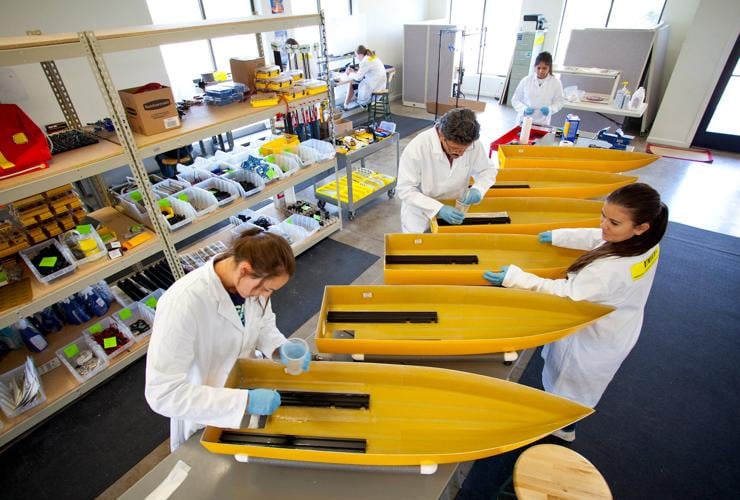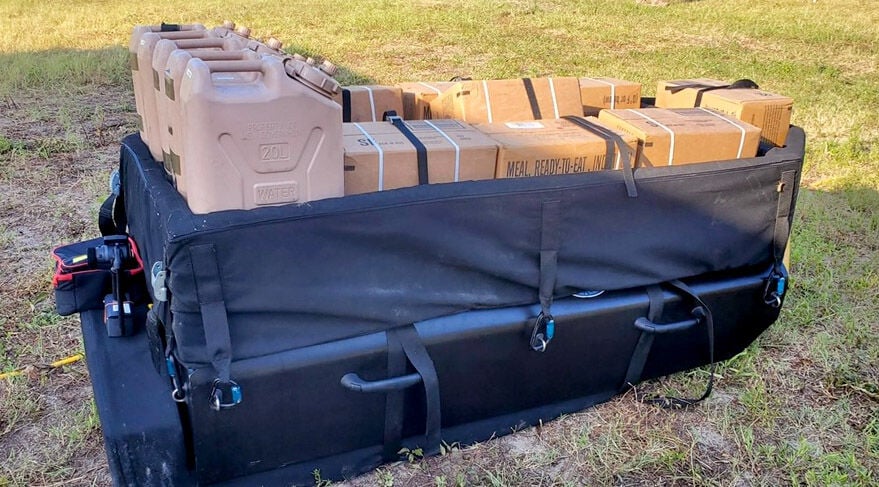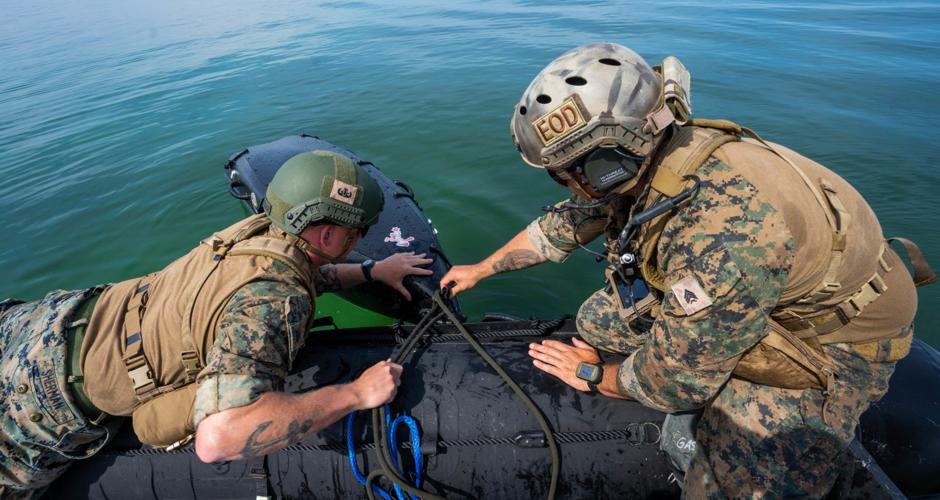After selling his aerial drone business to defense giant BAE Systems in 2009, Tony Mulligan turned his focus from air to water and set out to develop small, unmanned watercraft for emergency water rescue and research.
The idea led Mulligan to found Sahuarita-based Hydronalix Inc., which is now planning a major expansion to meet demand for its growing line of unmanned surface vessels and aerial drones.
The company’s line of unmanned surface vessels, or USVs, now includes a sonar-equipped version of EMILY, a more powerful general-purpose unmanned watercraft with a hybrid gas-electric powerplant, a robo-boat that can launch a rotorcraft drone, and an amphibious drone that can fly or cruise on water as needed.
Mulligan said that the company has sold about 900 of its EMILY (Emergency Integrated Lifesaving Lanyard) robotic rescue buoys to first-responder agencies around the world.
Overall, Mulligan said, the company has booked about $60 million in contracts since its inception and has delivered about 1,600 autonomous watercraft and aerial drones to emergency agencies, research and defense agencies and commercial operators worldwide.
And, with its biggest-ever single contract in hand, Hydronalix is on the verge of a major expansion of drone production locally.
Robo-boats for Marines
In September, Hydronalix was awarded a $9.1 million contract by the U.S. Navy to develop and integrate a series of “micro-unmanned” surface and aerial vehicles with sensor payloads for surveillance and enemy explosives detection for the Marine Corps.
Under the four-year contract from the Naval Air Warfare Center, Hydronalix is tasked with developing several capabilities under a Small Business Innovation Research Phase III program, including explosive ordnance neutralization in harbors, rivers, and in shallow coastal waters, river reconnaissance, swarming unmanned systems for disaster relief, maritime mine countermeasures and sea-floor mapping.
Last year, the Marine Corps tested Hyrdonalix drone boats for sea-floor mapping and mine hunting as part of the annual BALTOPS (Baltic Operations) exercise.
With Hydronalix already churning out EMILY rescue-bots and other craft to meet demand, the company is outgrowing its facility in Sahuarita (with a Green Valley postal address), where about 40 employees work in research and production.
Mulligan said the company is finalizing plans to open a second facility in Southern Arizona in the near future and will likely open a third plant.
“It’s at full capacity, plus for research,” Mulligan, a University of Arizona engineering alumnus, said of the Sahuarita space. “So we’re in the process of moving our production out of the research (area), and then it’ll be in the standalone facility.”
While most of Hydronalix’s 42 current employees work in Sahuarita, the company has small customer-support offices in California, North Carolina and Florida.
Mulligan said Hydronalix — which makes its boats in-house from the hull up — will likely double the size of its workforce in the next year, adding a range of workers including composite construction, engineers and even workers to sew up canvas boat covers and related textile items.
Global reach
Hydronalix’s EMILYs, which run on battery power and can be used to ferry lifejackets to struggling swimmers and can be configured with cameras and communications systems, are in use by first-responder agencies across the nation including California, New York, Texas and Oregon.
Locally, the company has granted EMILYs to the Northwest and Green Valley fire districts, but there have been no buyers in the company’s arid home state, despite its many lakes and the bordering Colorado River, Mulligan said.
“I’m not upset about it or anything — it’s Arizona,” he said. “Fortunately, the rest of the world likes our boats.”
Globally, Hydronalix now has distributors in 33 countries and sells in 50 nations across Europe, the Middle East, Central and South America, Asia, Africa and Australia.
Hydronalix won an export achievement award from the U.S. Department of Commerce after widening its reach from about a dozen countries in 2016 with the help of the Arizona Manufacturing Extension Partnership and Arizona’s State Trade Expansion Program (STEP), which includes foreign trade missions and export support services.
On the research side, a version of EMILY designed to take water samples is used in France and Ireland to monitor red tide along the coasts, while sonar-equipped EMILYs scan the waterways of Amsterdam, Rotterdam and The Hague, Mulligan said.
The company also recently won a contract from the Department of Energy to use its sonar-equipped robotic boats to monitor the health of sand dollars around hydrokinetic energy systems, which generate power from ocean currents, Mulligan said.
And the Michigan Department of Transportation is using EMILYs equipped with sonar and cameras to inspect bridges over waterways, which earned the system a spot on the American Society of Civil Engineers 2021 list of “game changing” technologies, Mulligan noted.
New capabilities
Beyond EMILY, Hydronalix has developed several larger, more powerful boats featuring hybrid gas-electric engines and the capability to mount sensors for weather monitoring, reconnaissance and other tasks, for research, commercial and defense applications.
Hydronalix’s larger AMY and NIX robo-boats can be paired with the company’s aerial drones capable of carrying small payloads such as water bottles, food or medicine.
And while some of the company’s larger boats can carry small loads of vital supplies, Hydronalix has built and tested a heavy-duty unmanned boat for the Marines that can carry up to 500 pounds of equipment.
On the research side, Hydronalix recently began testing a robotic boat that can fly for the National Oceanic and Atmospheric Administration.
“It’s amphibious — it flies like a helicopter and then when it’s on the water, it can do all the things that EMILY can do,” Mulligan said. “It can do side-scan imaging, sonar imaging, it can do 360-degree imaging. So you could fly off a cliff down to a river to see if a car is in the river and then fly back up.”
A recent contract from the Department of Interior is part of a research project with the University of Arizona and Texas A&M University to develop a “smart” EMILY that can ply inland waterways in a disaster and take navigation cues from a smart-device.
“So if you point your camera to a ferry that’s sinking or somebody drowning, it decides how to drive the boat to take it to the people to rescue,” Mulligan said.






